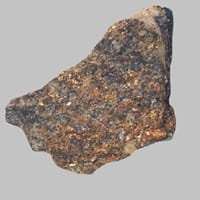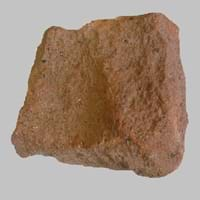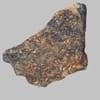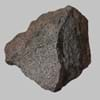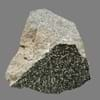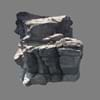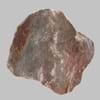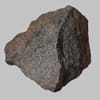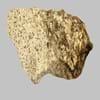Definition
Adakite is an intermediate to felsic volcanic rock that has geochemical characteristics of magma which is said to be formed by partial melting of altered basalt that is subducted below volcanic arcs
Ignimbrite is a volcanic rock consisting mainly of pumice fragments, formed by the consolidation of material deposited by pyroclastic flows
Origin
Adak, Aleutian Islands
New Zealand
Discoverer
Defant and Drummond
Patrick Marshall
Etymology
From Adak, Aleutian Islands
From Latin ignis fire + imber, imbr- shower of rain, storm cloud + -ite
Class
Igneous Rocks
Igneous Rocks
Sub-Class
Durable Rock, Medium Hardness Rock
Durable Rock, Medium Hardness Rock
Other Categories
Fine Grained Rock, Medium Grained Rock, Opaque Rock
Fine Grained Rock, Opaque Rock
Texture
Porphyritic
Aphanitic
Color
Black, Brown, Light to Dark Grey
Beige, Black, Brown, Grey, Pink, White
Durability
Durable
Durable
Appearance
Dull and Soft
Dull, Vesicular and Foilated
Interior Uses
Decorative Aggregates, Floor Tiles, Homes, Hotels, Kitchens
Decorative Aggregates, Floor Tiles, Homes, Interior Decoration
Exterior Uses
As Building Stone, As Facing Stone, Office Buildings
As Building Stone, Garden Decoration, Office Buildings, Paving Stone
Other Architectural Uses
Whetstones
Curbing
Construction Industry
As Dimension Stone, Cobblestones, Rail Track Ballast, Roadstone
Building houses or walls, Construction Aggregate
Medical Industry
Not Yet Used
Not Yet Used
Antiquity Uses
Monuments, Sculpture, Small Figurines
Artifacts, Monuments, Sculpture, Small Figurines
Commercial Uses
Commemorative Tablets, Pottery, Used in aquariums
Cemetery Markers, Commemorative Tablets, Creating Artwork
Types
Not Available
Not Available
Features
Has High structural resistance against erosion and climate, Host rock for Diamond, Very fine grained rock
Always found as volcanic pipes over deep continental crust
Archaeological Significance
Famous Monuments
Data Not Available
Data Not Available
Famous Sculptures
Data Not Available
Data Not Available
Formation
Adakite rocks are formed when the hydrous fluids are released from minerals that break down in metamorphosed basalt, and rise into the mantle they initiate partial melting.
Ignimbrites are formed from very poorly sorted mixture of volcanic ash or tuff and pumice lapilli, commonly with scattered lithic fragments.
Mineral Content
Olivine, Plagioclase, Pyroxene
Apatite, Biotite, Calcite, Chlorite, Feldspar, Hematite, Hornblade, Ilmenite, Magnetite, Olivine, Pyroxene, Quartz
Compound Content
Aluminium Oxide, MgO, Silicon Dioxide
Ca, NaCl
Types of Metamorphism
Cataclastic Metamorphism, Contact Metamorphism, Impact Metamorphism, Regional Metamorphism
Burial Metamorphism, Contact Metamorphism, Hydrothermal Metamorphism, Impact Metamorphism, Regional Metamorphism
Types of Weathering
Chemical Weathering, Mechanical Weathering
Biological Weathering, Chemical Weathering
Types of Erosion
Coastal Erosion, Sea Erosion, Water Erosion
Chemical Erosion, Coastal Erosion
Grain Size
Fine to Medium Grained
Fine Grained
Fracture
Conchoidal
Uneven
Streak
Bluish Black
White
Porosity
Less Porous
Highly Porous
Luster
Grainy, Pearly and Vitreous
Vitreous to Dull
Compressive Strength
Not Available
Cleavage
Not Available
Not Available
Toughness
Not Available
Not Available
Specific Gravity
Not Available
2.73
Transparency
Opaque
Opaque
Density
Not Available
1-1.8 g/cm3
Specific Heat Capacity
Not Available
Resistance
Heat Resistant, Pressure Resistant, Wear Resistant
Heat Resistant, Impact Resistant, Pressure Resistant, Wear Resistant
Deposits in Eastern Continents
Asia
India, Russia
Afghanistan, Armenia, Azerbaijan, Burma, Cambodia, China, India, Indonesia, Iran, Japan, Malaysia, Mongolia, Nepal, North Korea, Pakistan, Saudi Arabia, Syria, Taiwan, Thailand, Turkey, Vietnam, Yemen
Africa
Ethiopia, Somalia, South Africa
Cameroon, Cape Verde, Chad, Djibouti, Eritrea, Ethiopia, Kenya, Libya, Madagascar, Nigeria, Rwanda, South Africa, Sudan, Tanzania, Uganda
Europe
Iceland
France, Georgia, Germany, Greece, Iceland, Italy, Netherlands, Poland, Portugal, Spain, United Kingdom
Others
Not Yet Found
Antarctica, Hawaii Islands
Deposits in Western Continents
North America
Canada, USA
Canada, Costa Rica, Panama, USA
South America
Brazil
Argentina, Bolivia, Brazil, Chile, Colombia, Ecuador
Deposits in Oceania Continent
Australia
Not Yet Found
Central Australia, Western Australia
